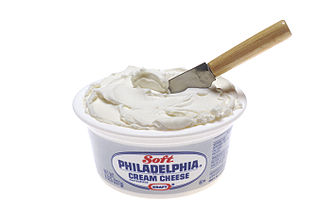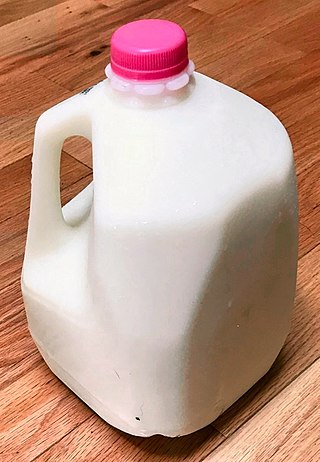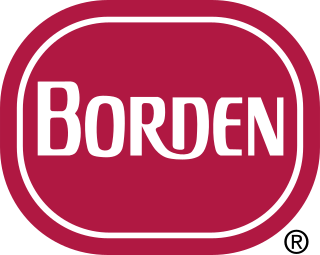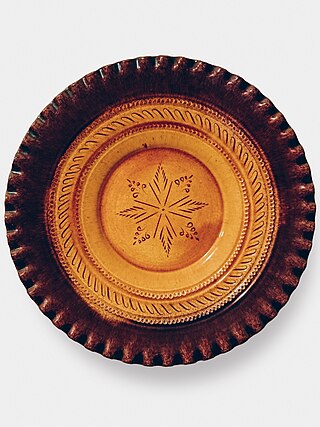Related Research Articles

Dairy products or milk products, also known as lacticinia, are food products made from milk. The most common dairy animals are cow, water buffalo, nanny goat, and ewe. Dairy products include common grocery store food items in the Western world such as yogurt, cheese and butter. A facility that produces dairy products is known as a dairy. Dairy products are consumed worldwide to varying degrees. Some people avoid some or all dairy products either because of lactose intolerance, veganism, or other health reasons or beliefs.

Milk is a white liquid food produced by the mammary glands of mammals. It is the primary source of nutrition for young mammals before they are able to digest solid food. Immune factors and immune-modulating components in milk contribute to milk immunity. Early-lactation milk, which is called colostrum, contains antibodies that strengthen the immune system, and thus reduces the risk of many diseases. Milk contains many nutrients, including protein and lactose.

Cream cheese is a soft, usually mild-tasting fresh cheese made from milk and cream. Stabilizers such as carob bean gum and carrageenan are often added in industrial production.

Roderick Spode, 7th Earl of Sidcup, often known as Spode or Lord Sidcup, is a recurring fictional character in the Jeeves novels of English comic writer P. G. Wodehouse. In the first novel in which he appears, he is an "amateur dictator" and the leader of a fictional fascist group in London called the Saviours of Britain, also known as the Black Shorts. He leaves the group after he inherits his title.

Carnation is a brand of food products. The brand was especially known for its evaporated milk product created in 1899, then called Carnation Sterilized Cream and later called Carnation Evaporated Milk. The brand has since been used for other related products including milk-flavoring mixes, flavored beverages, flavor syrups, hot cocoa mixes, instant breakfasts, corn flakes, ice cream novelties, and dog food. Nestlé acquired the Carnation Company in 1985.

In American English, a pitcher is a container with a spout used for storing and pouring liquids. In English-speaking countries outside North America, a jug is any container with a handle and a mouth and spout for liquid – American "pitchers" will be called jugs elsewhere. Generally a pitcher also has a handle, which makes pouring easier.

Jeeves in the Offing is a comic novel by P. G. Wodehouse, first published in the United States on 4 April 1960 by Simon & Schuster, Inc., New York, under the title How Right You Are, Jeeves, and in the United Kingdom on 12 August 1960 by Herbert Jenkins, London.

A milk substitute is any substance that resembles milk and can be used in the same ways as milk. Such substances may be variously known as non-dairy beverage, nut milk, grain milk, legume milk, mock milk and alternative milk.

The Code of the Woosters is a novel by P. G. Wodehouse, first published on 7 October 1938, in the United Kingdom by Herbert Jenkins, London, and in the United States by Doubleday, Doran, New York. It was previously serialised in The Saturday Evening Post (US) from 16 July to 3 September 1938, illustrated by Wallace Morgan, and in the London Daily Mail from 14 September to 6 October 1938.

Charles-Louis Clérisseau was a French architect, draughtsman, antiquary, and artist who became a leading authority on ancient Roman architecture and Roman ruins in Italy and France. With his influence extending to Russia, England, and the United States, and clients including Catherine the Great and Thomas Jefferson, Clérisseau played a key role in the genesis of neoclassical architecture during the second half of the 18th century.

Plastic milk containers are plastic containers for storing, shipping and dispensing milk. Plastic bottles, sometimes called jugs, have largely replaced glass bottles for home consumption. Glass milk bottles have traditionally been reusable while light-weight plastic bottles are designed for single trips and plastic recycling.

In modern usage, an aquamanile is a ewer or jug-type vessel in the form of one or more animal or human figures. It usually contained water for the washing of hands over a basin, which was part of both upper-class meals and the Christian Eucharist. Historically the term was sometimes used for any basin or ewer so used, regardless of shape. Most surviving examples are in metal, typically copper alloys, as pottery versions have rarely survived.

Borden, Inc., was an American producer of food and beverage products, consumer products, and industrial products. At one time, the company was the largest U.S. producer of dairy and pasta products. Its food division, Borden Foods, was based in Columbus, Ohio, and focused primarily on pasta and pasta sauces, bakery products, snacks, processed cheese, jams and jellies, and ice cream. It was best known for its Borden Ice Cream, Meadow Gold milk, Creamette pasta, and Borden Condensed Milk brands. Its consumer products and industrial segment marketed wallpaper, adhesives, plastics and resins. By 1993, sales of food products accounted for 67 percent of its revenue. It was also known for its Elmer's and Krazy Glue brands.

A creamer is a small pitcher or jug designed for holding cream or milk to be served with tea or coffee in the Western tradition. Creamers can be earthenware or porcelain, but also made of silver or other metals; a creamer is an obligatory part of a coffee or tea set, whether in silver or ceramics.

James Cox was a British jeweller, goldsmith and entrepreneur and the proprietor of Cox's Museum. He is now best known for creating ingenious automata and mechanical clocks, including Cox's timepiece, powered by atmospheric pressure, the Peacock Clock and the Silver Swan.
James M. Burnet was a Scottish painter of rural scenes, based in the London area for most of his career.

Jeeves and Wooster in Perfect Nonsense is a play written by David and Robert Goodale based on the 1938 novel The Code of the Woosters by P. G. Wodehouse. After try-out performances at the Richmond Theatre and the Theatre Royal, Brighton in October 2013, the play opened later that month at the West End's Duke of York's Theatre. The production won the Laurence Olivier Award for Best New Comedy in 2014.
"Jeeves Saves the Cow-Creamer" is the first episode of the second series of the 1990s British comedy television series Jeeves and Wooster. It is also called "The Silver Jug". It first aired in the UK on 14 April 1991 on ITV. Filming took place at Highclere Castle which was the principal location for Totleigh Towers.
Anne Smith was an English silversmith working in partnership with Nathaniel Appleton.

Latgalian pottery or Latgalian ceramics, also known as Silajāņi ceramics is the best-known subset of Latvian pottery. The region of Latgale historically has been the most prolific producer of wares. Latgalian ceramics rose to the popularity in the Soviet period, when art historian Jānis Pujāts wrote books about the best Latgalian ceramicists and organized several exhibitions to showcase their works.
References
- 1 2 Run Along & Sneer: The Code of Woosters. Koopman Rare Art. Retrieved 7 December 2017.
- ↑ Country Life , Vol. 181, p. 95.
- ↑ Cream jug. Victoria & Albert Museum. Retrieved 7 December 2017.
- ↑ Lot 127. Bonhams, 2016. Retrieved 7 December 2017.